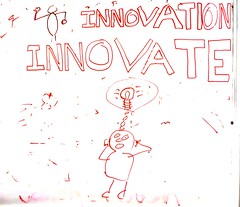Why is innovation so profitable? Because it’s hard to do!
March 06, 2008
The definition of innovation can often be simplified as the act of introducing something new, be it an idea, a method, or a new product. Yet while the definition is easily understood, the method to achieve successful innovation is obviously challenging. The continuously evolving business landscape and the vastly different organizational designs and cultures within companies clearly reveal that there is no “one size fits all” recipe for innovation success. However, what is important to recognize is that the approach to innovation, like many other business practices over the past 50 years, needs to change with the times in order to be successful.
Take Proctor and Gamble for example, a multi-billion dollar global organization that once prided itself on the capabilities of its internal R&D department to consistently innovate and create new products. Using this model, P&G created some of the most well known and profitable brands such as Tide and Crest, and successfully pushed these products to market with limited development input from external stakeholders.
However, over the past 10 years, this “closed door” approach has undergone a significant transformation. Recognizing the challenges of this model, leading organizations, including P&G, have dramatically changed the ways they facilitate and promote innovation.
Collaboration, working with customers, suppliers, employees and even competitors, to share ideas is fast becoming a key driver of success. At a recent Financial Executives International seminar in Toronto, John Fursey, a partner with IBM Consulting, highlighted the increasing importance of working with internal and external stakeholders to gather ideas to drive innovation. In fact, P&G, the once famed poster child of closed door R&D, now sources over 50% of its ideas externally. What’s even more surprising is this significant and challenging transition to leverage collaboration occurred in less than 10 years.
The notion of collaboration is daunting to many organizations given the potential complexities surrounding intellectual property, speed to market, working relationships, among many other variables. These are all legitimate concerns — collaboration as a means to drive innovation can be extremely difficult and complex, but remember that’s why it can be extremely profitable.
Learn to work and share ideas with others: it will pay off in the end!
